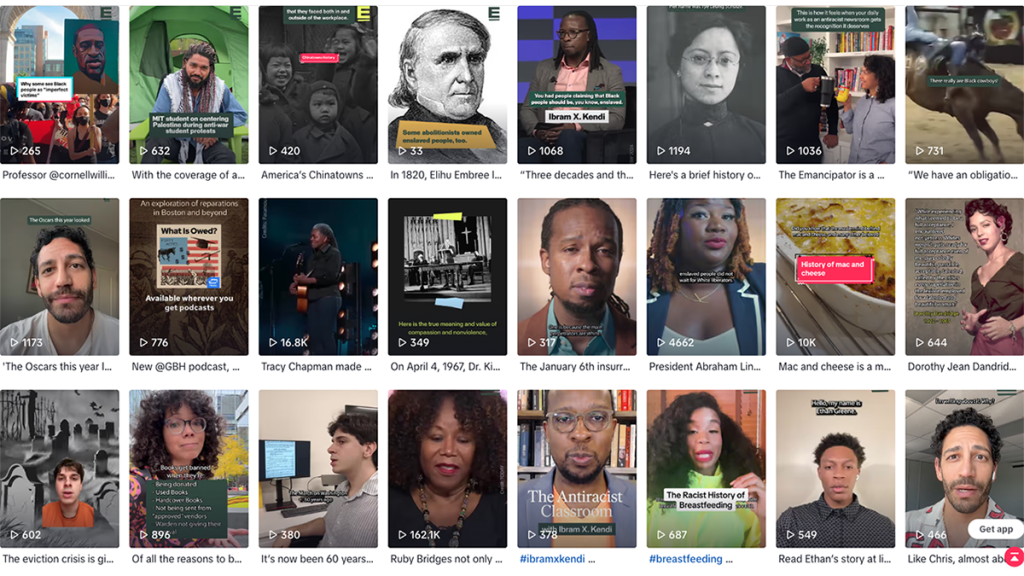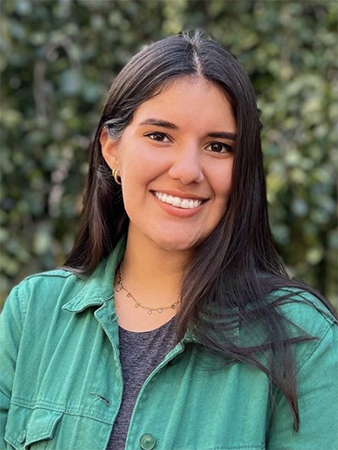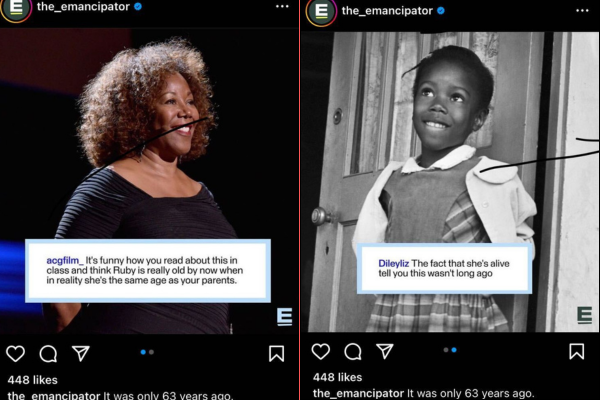
The Emancipator has recently grown its presence on TikTok, experimenting with different formats and collaborations.
Finding what works for your community on TikTok
A conversation with Melissa Clavijo, The Emancipator
Melissa Clavijo is the social media producer for The Emancipator, a national online magazine based in Boston that focuses on solutions-based stories related to racial inequity in the U.S. The publication, which Clavijo describes as a reimagining of the country’s first abolitionist newspaper, adopts a social-first strategy. In other words, they envision their content on social media, the website and events as three totally separate products and audiences.

Over the years, Clavijo has accomplished various strategic goals and ways to improve The Emancipator’s social media presence on Instagram, TikTok, Facebook and Twitter. The Innovation in Focus team spoke with her specifically about TikTok and strategies that helped her grow her audience and build brand consistency in that space.
Williams: What does collaboration look like when working on TikTok?
Clavijo: Something that has been working very well for us is creating scripts ahead of time. Depending on the type of content that you’re going to create, if you have an event or you want to produce a video, you’re not going to make the person go and be like, “Okay, figure it out. Good luck!”
If I’m going to do a video of a local bookstore, I sit down with whoever is recording — in most cases it’s me — and I’m like, “Okay, what’s gonna be on my shot list?” I’m going to need a medium shot of the outside of the bookstore, then a shot of the person that’s going to be on camera entering the bookstore, then a shot of the book, a shot of the person reading the book, all that stuff. It may sound like a lot but once you sit down and write it down, it’s way easier to produce all the content and then of course that helps you later on to have extra video. There’s never enough video.
Williams: What editing software/tools do you use or do you recommend?
Clavijo: I use Premiere, which I really like for captions because it has automated captions. Of course, I’m trying to mimic the CapCut type of captions that you’ve seen online. Then we use Canva and Figma for design. Figma is like an online version of Photoshop. We use it for web design.
Whenever I don’t have my computer next to me and I really need to turn around the video or I want to start it right away, I use InShot.
Williams: Have you had challenges with editing and making the video look like it was created on TikTok?
Clavijo: The challenge when you’re a small newsroom is: how can I transform content that can go on different platforms with it feeling natural for each specific space? What I try to do is to really catch up on the trends that go on both platforms. So if I noticed that there’s a trend that’s on TikTok — and in our case, we really prioritize Instagram — I try to see how people are responding to that same trend on Instagram. I don’t think I have trouble with shooting or editing on my phone. I just need to make sure the dimensions are the correct ones. For example, one thing we had to learn was our logo placement, making sure our logo was not covered by all the other elements of TikTok. And making sure the subtitles are visible for the audience.
Williams: How did you build up your frequency and consistency on TikTok and social media in general?
Clavijo: What we do is make sure that for every story or every video that we have, we create three more types of content. So we can spread them out throughout the week. For example, today we have a Q&A. From that Q&A, I’m going to have an image with a quote card. And from that same Q&A, if it’s about a book, I’m going to have a Reel of my editor reviewing the book. And then I’m going to have three tweets that I’m going to spread out throughout the week. So the idea is that from every piece that you have, try to always create two more types of content from it; have two more ideas in the back end that are low-lift. That’s how we manage to have daily content on Instagram.
Also, anything that you can try to schedule, do it in advance and block out time in your week to do that.
Williams: How do you figure out the sweet spots for how frequently you should post on each platform?
Clavijo: I keep track of our statistics weekly, and I have a monthly report that I show to the team. I build up the report myself; I take data from Meta; the Facebook Creator tool also gives you data on Instagram. I also take data from YouTube and Twitter. So every month I read into the content that has performed the best and what’s the content that has performed the worst? To keep track of the things that are working and the things that are not working, and how can we pivot from those? That’s how we figured out, for example on Twitter, that [with only tweeting once per day] our reach was going down.
On Twitter, we need to have two to three tweets per day minimum. Then on Instagram, we started posting once a day. On TikTok, right now we’re transferring our content from Instagram Reels. But we are aiming to create more daily content on TikTok in the next year. But of course that requires a lot of work and a lot of production.
Williams: Beyond posting, how do you engage with your community on platforms like TikTok or Instagram? And how do you know when to respond to comments?
Clavijo: We have our community guidelines where we don’t accept any type of hatred or bullying in our comment section. That’s the number one thing, you need to set your guidelines: this is what we’re going to allow and this is what we’re not going to tolerate.
But then there are different types of posts, right? There are more lightweight, happy posts where everyone comments with emojis, saying “Oh this is great,” or “congratulations” or “I’ve never heard of this.” Those are very easy to identify and very easy to respond to with an emoji or “thank you for commenting.”
Then, we have the questions, where they try to address us directly either about our stories, our website or links in our bios. Those questions are super helpful to create more content afterwards. I remember we had a Reel about Ruby Bridges, and a lot of the comments were: “Oh, I didn’t know she was that young. I didn’t know it wasn’t that long ago, like she’s my mom’s age.” So, we took the comments from that Reel and we created a carousel with an image of her now and an image of her then and two comments.

Then you have the type of posts that will ignite debate between people and those are the ones where you have to be very wise; depending on your editorial vision, you have to decide when to interfere. Most of the time when you see a debate in the comment section, let your community talk, of course making sure they are not offending anyone and following community guidelines.
Williams: How has your TikTok strategy evolved since you started?
Clavijo: At the beginning, you’ll see it was more taking clips of the long-form commentary videos we post on YouTube and putting them on TikTok. Then, we changed our strategy to try to make collaborations with influencers or activists who are experts on their topic. At The Emancipator, we hire writers and people for videos because we don’t have an in-house writer. So, we started applying that strategy to our TikTok account, and that’s when we saw the difference. Also, we started following the TikTok parameters like using the greenscreen, using the captions and hashtags. That’s when we started seeing our TikTok grow a little bit.
Williams: Do you have any other advice for other news organizations just getting started on TikTok?
Clavijo: My main advice would be to give yourself the time to plan and create the content. So if by next month, you want to do one video a week or three videos a week. The month before that? Record, produce, and edit everything so you have buckets of content ready. Also take advantage of scheduling platforms like Later, Hootsuite, or we use Sprinklr.
And do not be afraid of looking at the content and saying, okay this didn’t work. It’s good to pivot and find what’s going to work for your community. In this day and age we’re programmed to think that if it didn’t go viral then it didn’t work, but that’s not true at all. Because that’s how you see an account transform and grow.

Sign up for the Innovation in Focus Newsletter to get our articles, tips, guides and more in your inbox each month!
Cite this article
Williams, Kendall (2024, July 15). Starting on TikTok? Finding what works for your community on TikTok. Reynolds Journalism Institute. Retrieved from: https://rjionline.org/news/finding-what-works-for-your-community-on-tiktok/
